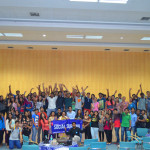UN Women has recently released a worldwide report on Cyber Violence Against Women And Girls: A World-Wide Wake-Up Call. Violence against women and girls (VAWG) and cyber security both have been separate hot topics across the globe, however they are rarely coupled. Cyber VAWG has also not been taken seriously, especially not in developing areas of the world, as those issues have been treated as secondary to other issue considered more pressing. However, young girls and women face real dangers online and are the primary and most popular targets of hate speech. It’s time we raise awareness, and start treating online VAWG as real as we should off line. Let’s review the key points of the report to have a clear idea of what is happening and what needs to be done.” target=”_blank”>Cyber Violence Against Women And Girls: A World-Wide Wake-Up Call. Violence against women and girls (VAWG) and cyber security both have been separate hot topics across the globe, however they are rarely coupled. Cyber VAWG has also not been taken seriously, especially not in developing areas of the world, as those issues have been treated as secondary to other issue considered more pressing. However, young girls and women face real dangers online and are the primary and most popular targets of hate speech. It’s time we raise awareness, and start treating online VAWG as real as we should off line. Let’s review the key points of the report to have a clear idea of what is happening and what needs to be done.
First, some definitions:
- VAWG is “Any act of gender-based violence that results in, or is likely to result in, physical, sexual or psychological harm or suffering to women, including threats of such acts, coercion or arbitrary deprivation of liberty, whether occurring in public or in private life.”
- The term ‘cyber’ is used to capture the different ways that the Internet exacerbates, magnifies or broadcasts the abuse. The full spectrum of behaviour ranges from online harassment to the desire to inflict physical harm including sexual assaults, murders and suicides.
Background
Women aged 18 to 24 are at a heightened risk of being exposed to every kind of cyber VAGW; they are “uniquely likely to experience stalking and sexual harassment, while also not escaping the high rates of other types of harassment common to young people in general”, like physical threats. As much as we treat online and offline VAWG differently, online violence is just a manifestation of sexism and how we treat women offline.
There are very real similarities in the way we treat online and offline VAWG: minimization, de-prioritization, shaming, disbelief, underreporting, inappropriate one size fits all solutions, etc. A report from India, for instance, suggests that “only 35 per cent of the women have reported about their victimization, 46.7 per cent have not reported and 18.3 per cent have been unaware of the fact that they have been victimized … women prefer not to report about their victimization owing to social issues.”
Online violence reproduces the same patterns and desire to humiliate, isolate, dominate, degrade and hurt women that offline perpetrators have. Technology, social media, photos and videos and so on, have become a tool to express and exacerbate the violence women and girls face daily. It has become another ‘expression’ for sexual harassment at the workplace, added humiliation in school, an easy tool for blackmail etc. Voices from Digital Spaces: Technology Related Violence against Women identifies five characteristics that distinguish cyber VAWG: anonymity, action at distance, automation, accessibility, and propagation and perpetuity. These characteristics make cyber VAWG unique, and add extra complication to the mix. Perpetuity is the most concerning for victims, as the abuse, the words, the images and videos rarely go away, adding trauma to an already traumatic situation.
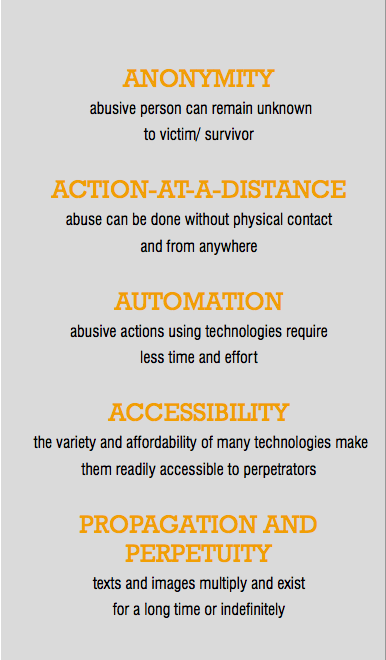

Needs
Regardless, there are 5 actions to be taken against VAWG that Due diligence has identified to fight online and offline VAWG. We need to:
- Prevent VAW
- Protect women from violence
- Prosecute and investigate incidences of VAW
- Punish perpetrators of VAW
- Provide redress to victims/survivors of VAW
Those are the 5Ps which need to be addressed in key priority areas of action through public sensitization, compliance of safeguards and the implementation of sanctions.
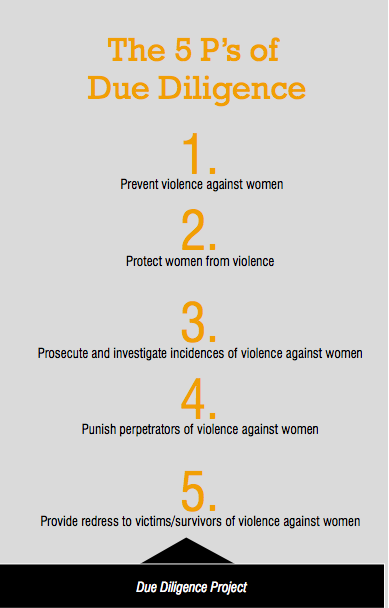

The needs and appropriate responses to VAWG off and online are the same. Responses to both, however, have yet to fully address the many degrees and impact of violence, trauma and loss that women, girls and children are routinely exposed to and that go unreported. There is a dire need for a multilevel response to VAWG online and offline. It is a problem of pandemic proportion when research asserts that one in three women will have experienced a form of violence in her lifetime. Cyber VAWG could significantly increase this staggering number, as reports suggest that 73% of women have already been exposed to or have experienced some form of online violence in what must still be considered a relatively new and growing technology. Furthermore, perpetrators of VAWG are rarely held accountable in part due to the relatively low capacity to prosecute offenders- particularly when the violence is online, cyber law and crime is facing this problem for every issue, including VAWG.
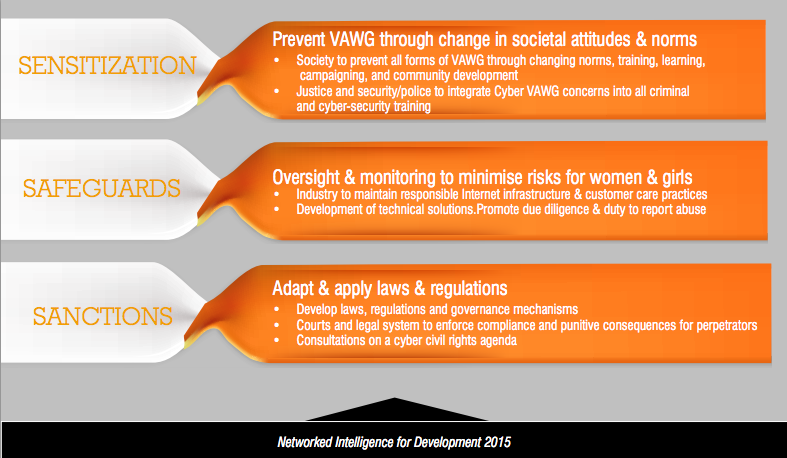

In 1995 less than 1 per cent of the world population was connected to the Internet, today there are over three billion unique Internet users, which goes to show how sensitization, safeguards and sanctions are imperatives which support the others, and will need consistent, collaborative action at many levels. Failure to address and solve cyber VAWG could significantly impede the digital inclusion of women everywhere, putting women at increasing disadvantage for being excluded from enjoying the benefits of ICTs and the Internet.
However, the legal background of many countries on cyber crimes and VAWG have a long way to go. India for example, and its Indecent Representation of Women (Prohibition) Act 1986 (IRWA), is currently under consideration for amendment by Parliament to include virtual spaces. Indian laws regarding data privacy, offensive communication through Internet and digital communication technology, and jurisdictional issues in cases of crimes committed through ICT and DCT still need to be developed. Cyber violence is a systematic concern, combining cyber crime and fraud, human rights, cultural norms, intern governance, and national laws.
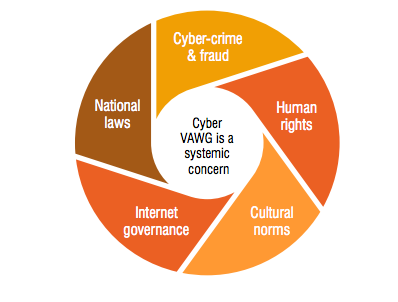

Clearly in order to tackle cyber VAWG we need to tackle VAWG offline. Especially since as I mentioned earlier, cyber VAWG is the reflection of sexist and violent attitudes of people and societies offline. Tackling VAWG outside of the Internet would set a precedent of intolerance, prosecution and punishment, and prevention offline would help limit its spread online etc. Responses need to work in tandem, to ensure violence doesn’t happen offline and get exacerbated and spread online, ensure that tactics online and offline of perpetrators be recognized as such and stopped in time, and sensitization the norm etc.
“When the safety of women is discussed, the focus is often on how women should be protected. But protection is not the same thing as security. The question should be what women need to safely participate in society.” Kvinna Till Kvinna Foundation
The reality is: The respect for and security of girls and women must at all times be front and center of those in charge of producing and providing the content, technical backbone and enabling environment of our digital society. Failure to do so will clip the potential of the Internet as an engine for gender equality and women’s empowerment. Cyber security for women is also not confined to the developed world. Women are accessing the Internet, and providing a safe environment is primordial.
It’s for Cyber VAWG to be seen as a problem and for it to be taken seriously. The Centre for Social Research is trying to tackle the prevention side with its #SocialSurfing program in collaboration with Facebook launched across India. The idea is to conduct workshops in 35 colleges in India to promote safe social surfing and that access is empowerment. The idea is to engage with college students, to enable them with powerful social media tools, and to collaborate in creating innovative campaigns for social change.
Should you be victim of a case of cyber violence, or know someone who is, and are seeking help, feel free to send us a formal email with your case, and we will do our best to help you, at amikumar@csrindia.com
Donation for Centre for Social Research to Join our effort in rehabilitating Domestic Violence
Discuss this article on Facebook



